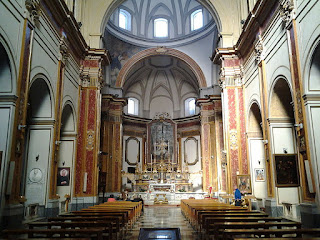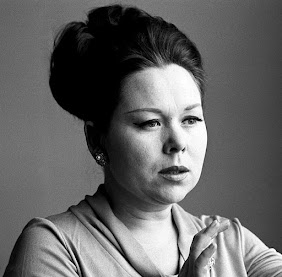Brilliant career overshadowed by infamous on-stage fight
 |
| A portrait of Faustina Bordoni by the Venetian painter Rosalba Carriera |
Such was her popularity that when she joined her husband, the German composer Johann Adolf Hasse, in the employment of the Court of Saxony, where Hasse was maestro di cappella, her salary was double his.
Yet for all her acting talent and vocal brilliance, Bordoni is more often remembered as one half of the so-called ‘rival queens’ engaged by George Frideric Handel to join the company of the booming Royal Academy of Music in London in the 1720s, where she and the Italian soprano Francesca Cuzzoni allegedly came to blows on stage.
Born into a respected Venetian family, Bordoni’s musical talent was nurtured by the composers Alessandro and Benedetto Marcello and by her singing teacher, Michelangelo Gasparini.
She made her debut in Venice at the age of 19 in Carlo Francesco Pollarolo's Ariodante. The quality of her voice excited the critics, while audiences were instantly charmed by her youthful beauty and stage presence.
Fame came quickly. As well as continuing to perform in her home city, where she performed for composers such as Tomaso Albinoni and Giuseppe Maria Orlandini, Bordoni sang in venues across Italy and in both Vienna and Munich. Her fans began to refer to her simply as ‘Faustina’.
 |
| Bordoni's singing rival, Francesca Cuzzoni |
Cuzzoni had been in London since 1722, establishing herself as one of the stars of the Royal Academy alongside the celebrated castrato, Senesino. Already known for a fiery temper, she had once allegedly refused to perform a role when she discovered Handel had initially written it for someone else.
When Handel, under pressure from the theatre management to engage more singers so they could meet a growing demand for performances as opera’s popularity soared, announced that Bordoni would be joining them in London, Cuzzoni was said to be furious.
After Bordoni’s debut alongside Cuzzoni in Handel’s Alessandro, London opera fans began to divide into factions who favoured Faustina and others who preferred Cuzzoni.
Watching opera in the 1700s was very different from today. Although theatres had wealthy patrons, they also provided entertainment for the masses and audiences did not necessarily conduct themselves with decorum, even to the extent of booing a singer considered a rival to their favourite.
 |
| Johann Adolf Hesse, to whom Bordoni was married in 1730 |
Despite the presence of Caroline, Princess of Wales in the audience, rival factions took turns to jeer and catcall whenever one or the other began to sing and when the two singers appeared on the stage together a fight broke out in the stalls.
Although accounts in the newspapers were almost certainly exaggerated for dramatic effect, Cuzzoni was reported to have turned on Bordoni, sparking an exchange of insults. Soon they were said to have begun pulling at each other’s hair and tearing pieces from their costumes. After they were separated, the performance was abandoned.
Bordoni left England the following year after the Royal Academy was forced into closure with unsustainable debts, driven partly by the high salaries commanded by the singers. She married Hasse in 1730 and they remained with the Saxon Court in Dresden for 30 years, enjoying the status of a celebrity couple. Bordoni sang in 15 operas written by her husband, as well as continuing to travel regularly to the major opera houses of Italy.
She and Hasse left Dresden for Vienna in 1763 and ultimately to Venice in 1773. Bordoni is said to have continued to sing into her 70s before settling into a comfortable retirement. She died in Venice in 1781 at the age of 84.
 |
| Teatro La Fenice opened its doors in 1792 |
Opera was so popular in Venice in the 18th century that the city boasted no fewer than seven opera houses. The biggest of these, the Teatro San Benedetto in San Marco, was destroyed in a fire in 1771. Rebuilt, it became the object of a legal dispute involving the Venier family, who owned part of the land on which the theatre was built. The Venier family won the case and the company running the theatre had to sell up. On a different site, they built another opera house and called in Teatro La Fenice - the Phoenix Theatre - to symbolise its rise from the flames. Work was completed in April 1792 and the new opera house inaugurated on 16 May with a performance of I giochi di Agrigento by Giovanni Paisiello, to a libretto by Alessandro Pepoli.
Travel tip:
Faustina Bordoni and her husband Johann Adolf Hasse are buried within the Church of San Marcuola in the Cannaregio district of Venice, overlooking the Grand Canal, opposite the Fontego dei Turchi, between Santa Lucia railway station and the Rialto. The church is actually dedicated to Saints Ermagora and Fortunato. The name San Marcuola is thought to be rooted in Venetian dialect. The church is thought to have been built originally in the 12th century. It was restructured in the 18th century by Giorgio Massari in accordance with plans drawn up by Antonio Gaspari, but the façade remained unfinished. The interior is notable for a Last Supper by Jacopo Tintoretto, thought to be one of the Venetian painter’s earliest works.
Also on this day:
1282: Sicily rises up against the French
1815: The Proclamation that began the Risorgimento movement
1892: The birth of Futurist painter and graphic artist Fortunato Depero
1905: The birth of urban engineer and architect Ignazio Gardella
.jpg)












.jpg)


.png)


.jpg)
.jpg)
.jpg)


.jpg)
.jpg)










